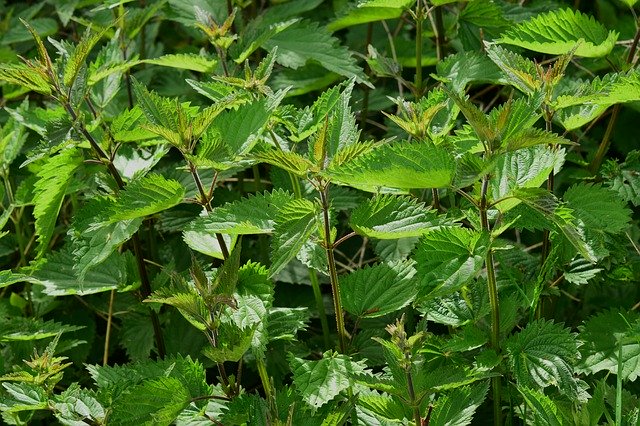Nettle Leaf
Also known as
Urtica dioica, Stinging Nettle, Common Nettle, Gerrais, Isirgan, Kazink, Ortiga, Grande Ortie, Ortie, Urtiga, Chichicaste, and Brennessel
Introduction
The common nettle comes by its other name, stinging nettle, honestly. The innocuous plant, a perennial that grows in many parts of the world and that has been naturalized to Brazil, delivers a stinging burn when the hairs on the leaves and stems are touched. Its healing properties are as well known among various cultures and are part of folklore and tradition. Those healing powers are even alluded to in at least one fairy tale, The Swan Princess, in which the heroine must weave shirts of nettle leaf to cure her twelve brothers who have been turned into swans by an evil stepmother. The nettle leaf and root both have medicinal properties, but each is more effective against different complaints. Nettle leaf is used traditionally as a diuretic, and as a treatment for rheumatism and arthritis. In Germany, a standardized extract is sold for the treatment of inflammatory conditions and prostate diseases. Nettle leaf's effectiveness against rheumatism and other inflammatory diseases is well documented, and borne out by chemical analysis of the plant.
Constituents
Formic acid, histamine, serotonin, choline, minerals, chlorophyll, amino acids, lecithin, carotenoids, flavonoids, sterols, tannins and vitamins. Nettle's main plant chemicals include: acetophenone, acetylcholine, agglutinins, alkaloids, astragalin, butyric acid, caffeic acids, carbonic acid, chlorogenic acid, chlorophyll, choline, coumaric acid, folacin, formic acid, friedelins, histamine, kaempherols, koproporphyrin, lectins, lecithin, lignans, linoleic acid, linolenic acid, neoolivil, palmitic acid, pantothenic acid, quercetin, quinic acid, scopoletin, secoisolariciresinol, serotonin, sitosterols, stigmasterol, succinic acid, terpenes, violaxanthin, and xanthophylls.
Parts Used
Leaves
Typical Preparations
Steamed and eaten in salads, pastas, etc. As a tea, extract and capsule.
Summary
Nettle's purported anti-inflammatory effects have been repeatedly confirmed by modern research over the past ten years. It is particularly effective in treating allergic rhinitis, relieving nearly all the symptoms of itchy, watery eyes, sneezing and runny nose. It also has performed better than the prescription drug furosemide in reducing blood pressure, increasing urine output as a diuretic and increasing salt excretion. It also seems to be effective in reducing pain and producing a sedative effect. It is important to keep in mind that the medicinal effects of the leaf and root of the nettle are markedly different. Nettle root, for instance, shows exceptional efficacy in treating prostate complaints in men. Nettle leaf has some of the same effects, but not to the same extent. The leaf, on the other hand, shows some promise in boosting immune system function and is an effective treatment for many skin conditions. One final use should be noted and that is nettle leaf has been used as a hair and scalp treatment for centuries, and again, those uses are being supported by research as well. Nettle leaf extract seems to promote hair regrowth and thicken hair, as well as reducing dandruff and scalp conditions when used as a rinse.
Precautions
Because of its diuretic and hypotensive actions, nettle leaf may lower blood pressure. If you are taking diuretics or other drugs meant to lower blood pressure, consult your doctor before using nettle leaf. Its long term, extended use is not recommended.
PURCHASE STINGING NETTLE LEAF EXTRACT
For educational purposes only This information has not been evaluated by the Food and Drug Administration. This information is not intended to diagnose, treat, cure, or prevent any disease.
This information courtesy of MOUNTAIN ROSE HERBS, with full, written permission for reuse. For further traditional information concerning STINGING NETTLE LEAF , please visit this excellent resource fromBotanical.com. Used with full, written permission.








